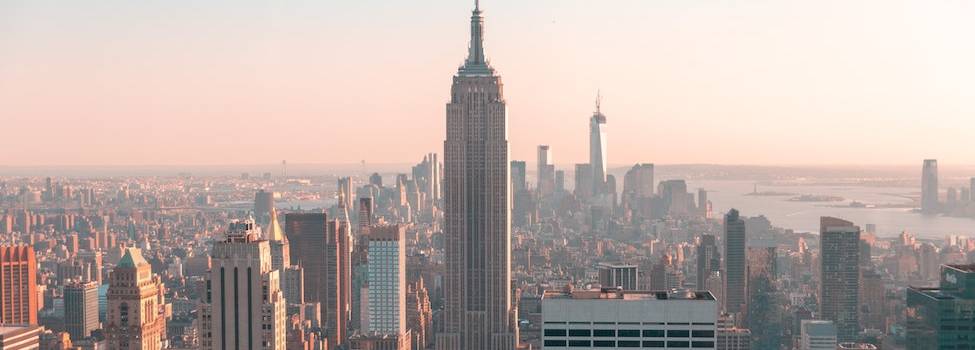Master’s in Management Programs in New York: A Vast Range of Opportunities

The Big Apple enjoys near unparalleled access to corporate recruiters, diverse cultural attractions and top-class business schools
Each year, more than 118,000 students from around the world flock to New York to pursue higher education, attracted by its commercial and cultural clout. A large chunk of these students will enroll in business schools, since business and management studies are the most popular degree subjects in the US.
When it comes to Master in Management (MiM) degrees, there’s a plethora of world-class business schools at which to study MiMs in New York City and New York State — including the New York Institute of Technology, Fordham University and Cornell University’s Johnson College of Business.
Elsewhere, the Lally School of Management at Rensselaer Polytechnic Institute runs an MSc in Management, as does the Rochester Institute of Technology's Saunders College of Business.
MiM students can tap into New York’s unique advantages
There are several compelling reasons to pick New York for your MiM, or specialized business master’s program. As New York City is a hub for commerce, finance, technology, entertainment and more, students have exposure to a vast range of industries while earning their degree. This can help with specific subjects, such as accountancy — New York City’s diverse industries prepare students to meet diverse client needs as accountants.
“New York City offers unique advantages. After graduating from our program, many students begin their careers working in one of ‘The Big Four’ large public accounting firms — Deloitte, PricewaterhouseCoopers, Ernst & Young, and KPMG,” says Isser Gallogly, associate dean at NYU Stern, referring to the school’s one-year MS in Accounting course.
However, later in their careers, if graduates want to move from an accounting firm directly into an industry role, New York City offers a wide range of companies to explore.
This type of organizational diversity lends itself to great comparative study of leadership styles and approaches to situations, says Cheryl Harrison, dean of Manhattan College's School of Continuing and Professional Studies.
“Because New York is so diverse, students have ample opportunity to gain a variety of perspectives, since the city abounds with corporations, government agencies and non-profit organizations,” she says.
Many business schools in the city have built up extensive alumni networks to get graduates into these companies. Stern’s global alumni community, for example, includes 110,000 members in 138 countries, with 70 percent of alums currently living in the tri-state area.
What’s more, many of these alums come back as guest speakers, or facilitate access to executives and corporate recruiters for consulting projects.
One of the distinctive features of Manhattan College’s MSc in Organizational Leadership program is a two-term capstone course where students consult a real organization, working with senior management and professors on a problem or opportunity.
Harrison says the program’s faculty is comprised of working professionals and retired executives from across the private, public and entrepreneurial sectors. “These faculty members utilize their extensive networks by inviting impressive guest speakers into the classroom and scheduling visits to organizations where executives address and interact with the students,” she says.
New York’s diversity makes it a great home for MiM students
In addition to the vast range of professional opportunities, New York City is rich in diverse cultures as well, with residents from all over the world. New York City is renowned for international cuisine too, plus award-winning Broadway shows, dozens of museums covering art, history, natural wonders — all are just a subway ride away.
“New York is a progressive city that embraces diversity and is highly connected to the global community,” says NYU Stern’s Gallogly. “There is truly something for everyone in the Big Apple.”
Harrison says: “New York personifies multiculturalism. For this reason alone, it makes this city a great place to study. Students are exposed to different cultures, religions, lifestyles and foods.
[See all Master in Management (MSc, MA, MiM) programs in New York]
“Additionally, students have access to some of the greatest museums in the world. There are wonderful concerts and a variety of theater options from community playhouses to Broadway. There is no shortage of cultural experiences for students.”
However, there are a few downsides to doing an MiM in New York
The downside to New York City is the cost of living, which is relatively high — and students may get less living space than in other parts of the US. According to the Economist Intelligence Unit, New York City rose six spots to joint seventh place with Denmark’s Copenhagen in the latest global Cost of Living survey. Alongside Los Angeles, NYC is one of only two US cities in the top 10.
In addition to the high cost of living in New York City, it can be overwhelming for some newcomers because of its dense population, says Manhattan College’s Harrison.
“Also, transportation can be an issue for some newly relocated students. Car travel to do errands and attend events will quickly be replaced with public transportation due to heavy traffic patterns, lack of available parking and expensive parking lot costs,” she says.
However, because the school is located in the Riverdale section of the Bronx, living costs are lower than in Manhattan itself, which is just a train ride away.
And people who love what the city has to offer may consider the benefits — including access to corporate recruiters, diverse cultural attractions and top-class business schools — to significantly outweigh any cost factors. Indeed, New York, along with Boston is one of just two US cities in the top 30 of the rankings for student cities produced by QS.
The ranking is based on the number of top schools in a city, the local jobs market, the diversity of the culture and the quality of life. On these fronts, New York City has it all.






